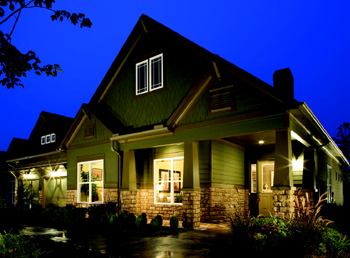Builders used to call Mary Jo Peterson to help them design kitchens and bathrooms buyers wanted. Increasingly, they are hiring her to design kitchens and bathrooms most buyers contend they don’t want or need, even if they might one day. Peterson, a Brookfield, Conn.-based kitchen and bath designer, has become a go-to person for builders of Active Adult communities interested in designing homes where the buyers can easily age in place without moving or doing extensive remodeling later.
The other part of Peterson’s job is teaching builders and their designers how to make these spaces so beautiful and normal looking that party-hearty, age-phobic baby boomer buyers won’t run screaming. “If you design it, and it looks like an institution, it won’t fly,” says Peterson. “My one rule in this market is: If it doesn’t look good, don’t do it.”
Peterson became interested in designing spaces for people with disabilities about 15 years ago. While trying to make spaces friendlier for those who use wheelchairs or walkers, she discovered that many of the features she was including would be helpful for people without disabilities as well. She had inadvertently stumbled onto universal design—the term coined by legendary architect Ron Mace to describe the concept of designing all products and the built environment to be aesthetic and usable to the greatest extent possible by everyone, regardless of their age, ability, or status in life.
The wider doorways with slight or no thresholds, which wheelchairs need, also make it easier to move furniture into a home and roll luggage or a baby stroller through the front door. Grab bars on tubs are handy for small children, pregnant women, or someone who has had too much wine at dinner—or simply as a place to hang towels from. Spacious, open floor plans and bathrooms with some space for maneuvering are helpful for those using a wheelchair or walker, and they are in style now anyway.
THE PUSH BACK Builders worry about cost. They worry about how it will look. But most of all they worry it won’t sell to boomers. “I am not sure that [boomers] are going to see [universal design] as a real positive,” says Ed Hord, FAIA, principal in Hord, Coplan, Macht, a Baltimore architectural firm. “It really has to be high design or they are going to say, ‘Hey, I don’t need this stuff.’ ” Not that they aren’t going to need the accommodations, he says, “but they don’t want to think about it.”
Designers like Peterson and others kept sneaking universal design features into their homes to show how seamless they could look. They also offered seminars on the topic, explaining that basic universal design elements don’t have to cost much more. “A lot of the costs are transition costs—one-time costs,” says Dick Duncan, director of the Center for Universal Design at North Carolina State University. “It’s retraining architects, tradespeople, inspectors. You may have to redo your plans.”
It helped when the NAHB 50+ Housing Council (then called the Seniors Housing Council) took up the cause, sponsoring seminars at builders’ shows on the topic of aging-in-place design and otherwise educating builders and affiliated tradespeople.
The efforts are beginning to show results. “I think it is starting to take hold,” says Richard Rosen, a principal with Eastman Perkins architects in New York, who serves as a judge for 50+ housing design contests. “I think there have been enough examples now of very chic-looking houses” designed for aging in place, he says. “You are providing better spaces. We encourage our clients to do this, and I think it will become common practice within the next 10 years.”
PROGRESS AND ROADBLOCKS Peterson agrees that builders are beginning to see the light. “Builders are definitely ‘getting’ the need for it,” she says. “Now the concept of aging in place is more acceptable, especially if you compare it to five years ago; it’s exponential.” More builders are hiring Peterson to train designers, architects, and sales teams about universal design. That process is critical, she says. “Like any other changes in how you develop product, it needs to have buy-in and understanding for the whole team.”



